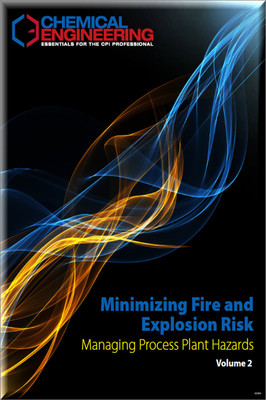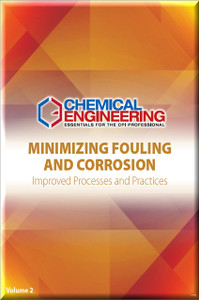Description
All chemical process plants that handle fuels, chemicals, flammable fluids, and combustible powders face the risk of fire and explosions. Proper hazard identification, engineering design strategies, and instrumentation and control systems can significantly reduce risk and minimize potential damage.
This guidebook contains practical engineering articles to help facilities maximize safety and minimize fire-related risks. Included are tips for assessing potential hazards, protecting personnel and assets, and implementing robust engineering strategies.
Articles focus on handling potentially explosive liquids and powders, operating vacuum and distillation systems, proper tank and pipeline design, and managing MSDS programs and protective gear.
Features & Benefits
- Guidance on handling explosive liquids, powders, and vacuum systems
- Practical strategies for fire prevention and mitigation in process plants
- Recommendations for safe tank and pipeline design
- MSDS management and personal protective equipment guidance
- Cybersecurity and alarm management considerations for plant safety
- Lifecycle safety guidance for process and chemical engineers
Audience
- Process and chemical engineers in the CPI
- Plant and operations managers
- Maintenance and reliability engineers
- Safety and compliance professionals
- Engineering consultants handling hazardous chemicals
Articles Include
- How to Handle Hydrogen in Process Plants
- A Checklist for Safer Chemical Batch Reactions
- Designing Safer Process Plants
- Runaway Reactions: Ignore the Chemistry at Your Peril
- Preventing Self-Heating and Ignition in Drying Operations
- Engineering for Plant Safety
- Designing Atmospheric Storage Tanks
- Gas Detection
- Batch Drying With Vacuum Contact Dryers
- Dust Hazards
- Chemical Protective Clothing
- Gas Hazard Definitions and Data
- Static Electricity Discharge and Fire Prevention
- Clearing the Air About Respiratory Protection
- Eye-and-Face Personal Protective Equipment
- Managing Compliant MSDSs and Labels
- Design Safer Solids Processing Plants
- Process Hazards Analysis Methods
- Finding the Right Gloves to Fit the Application
- Dust Control in the Chemical Processing Industries
- Cybersecurity Defense for Industrial Process-Control Systems
- Piping Design for Hazardous Fluid Service
- Alarm Management
- Prevent Combustible Dust Explosions with N2 Inerting
- Industrial Combustion Products
- Pressure-Relief System Design: Developments and Deficiencies
- Insulating Heat-Transfer-Fluid Piping
- NFPA 652: Standardizing Combustible Dust Standards
- Managing Material Safety Data Sheets in the Workplace
- Dust Explosions: Prevention & Protection
- Piping Design for Potentially Lethal Chemicals
- Safety in Sulfuric Acid Storage Tanks
- Dust Management in Bulk-Material-Handling Operations
- Filter Aids
- Preventing Dust Explosions
- Compressed Gases: Managing Cylinders Safely
- Reduce Hazards in Process Vacuum Systems
- Piping Codes: What the CPI Engineer Should Know
- Cybersecurity: You Cannot Secure What You Cannot See
- Tolerable Risk
- Vacuum Systems: Recommendations for Safe Operation
Type: PDF
Pages: 200






